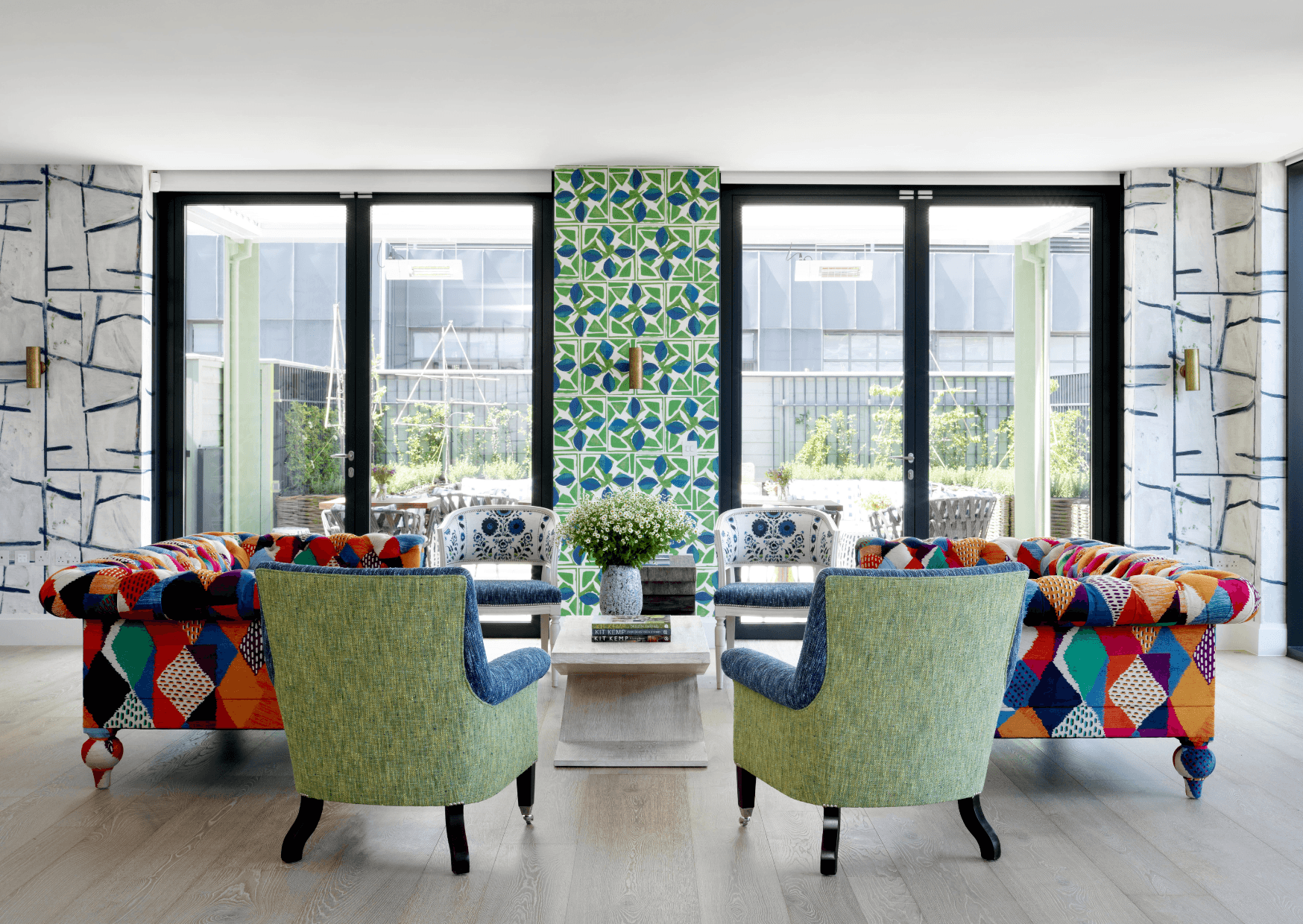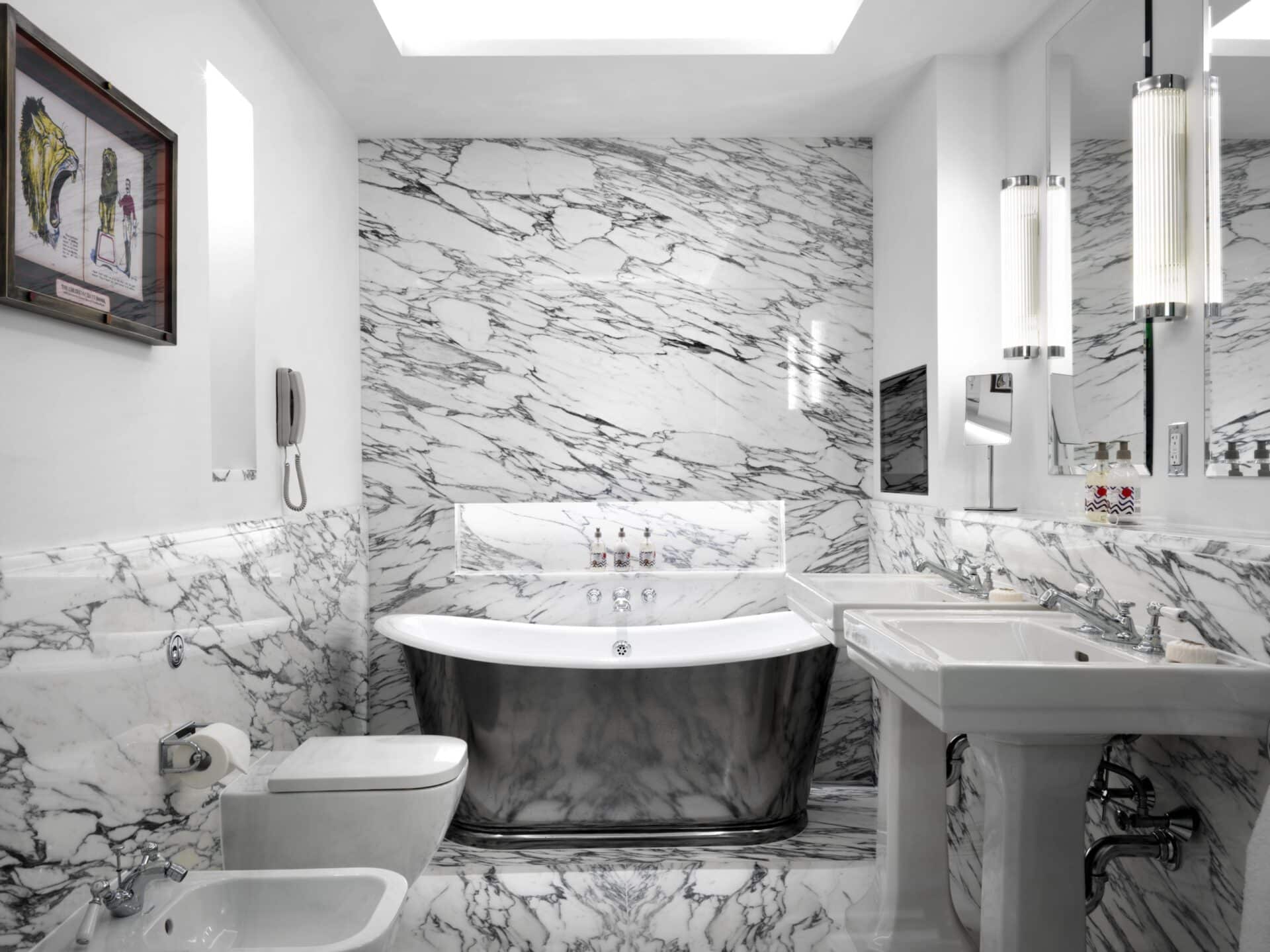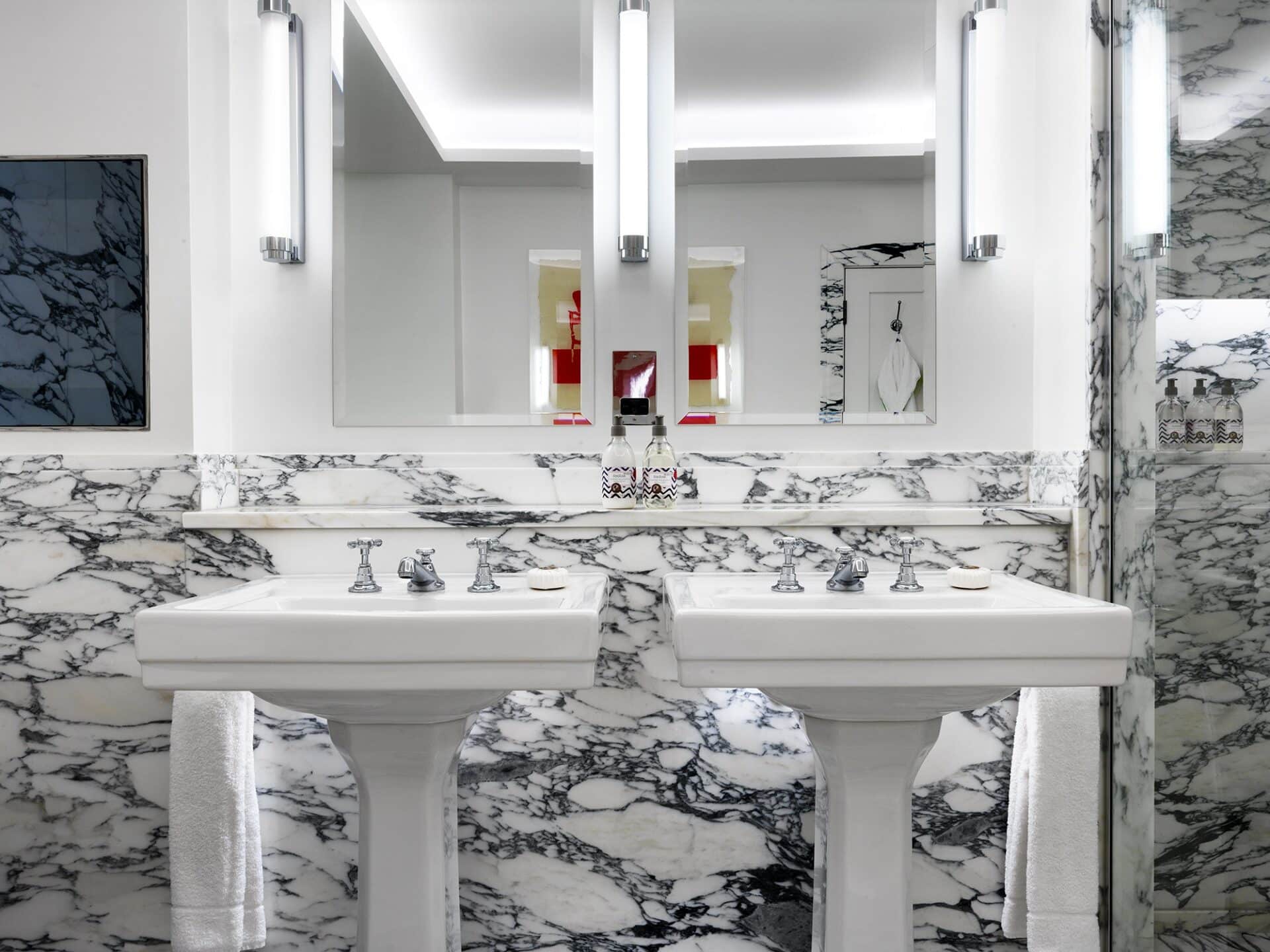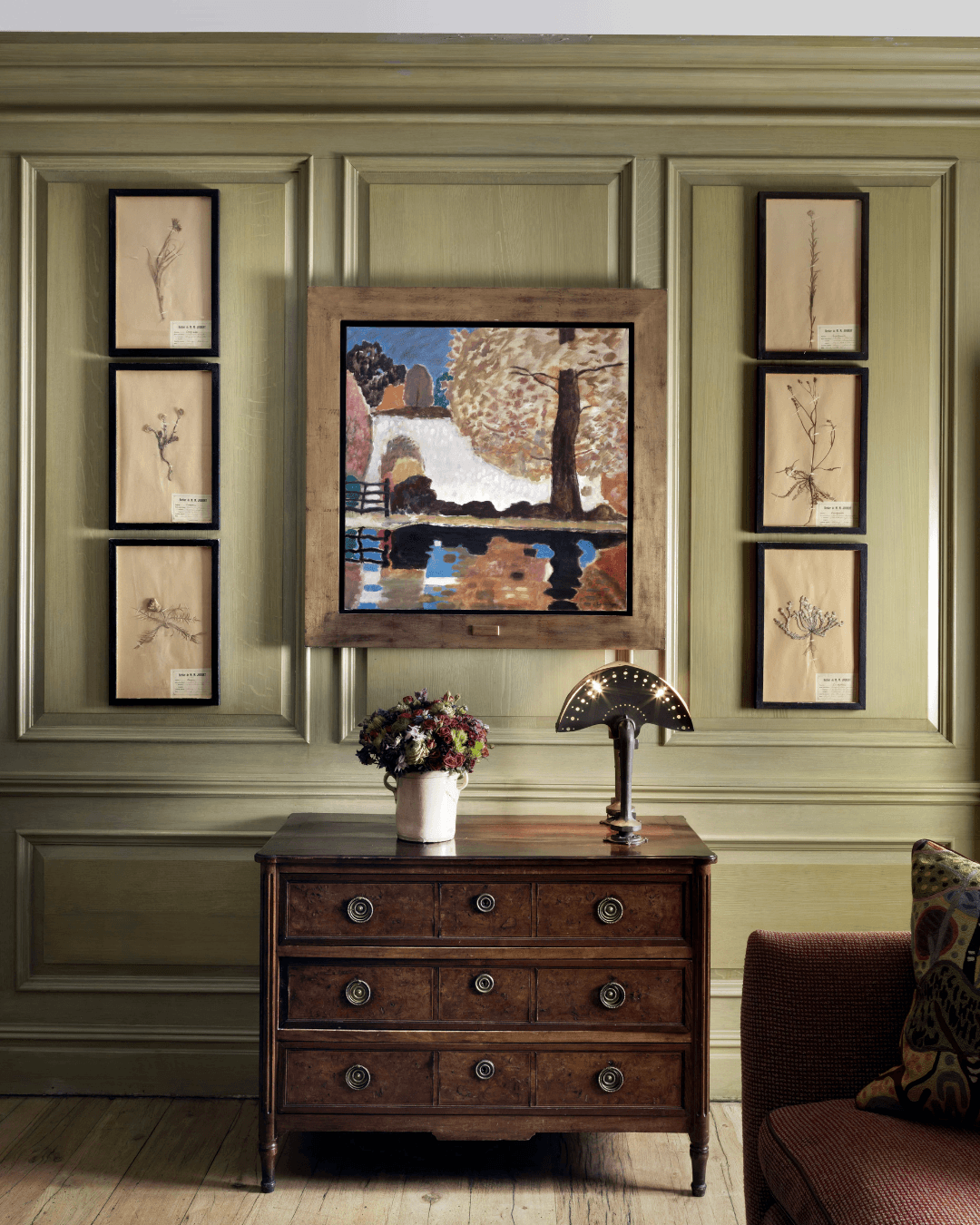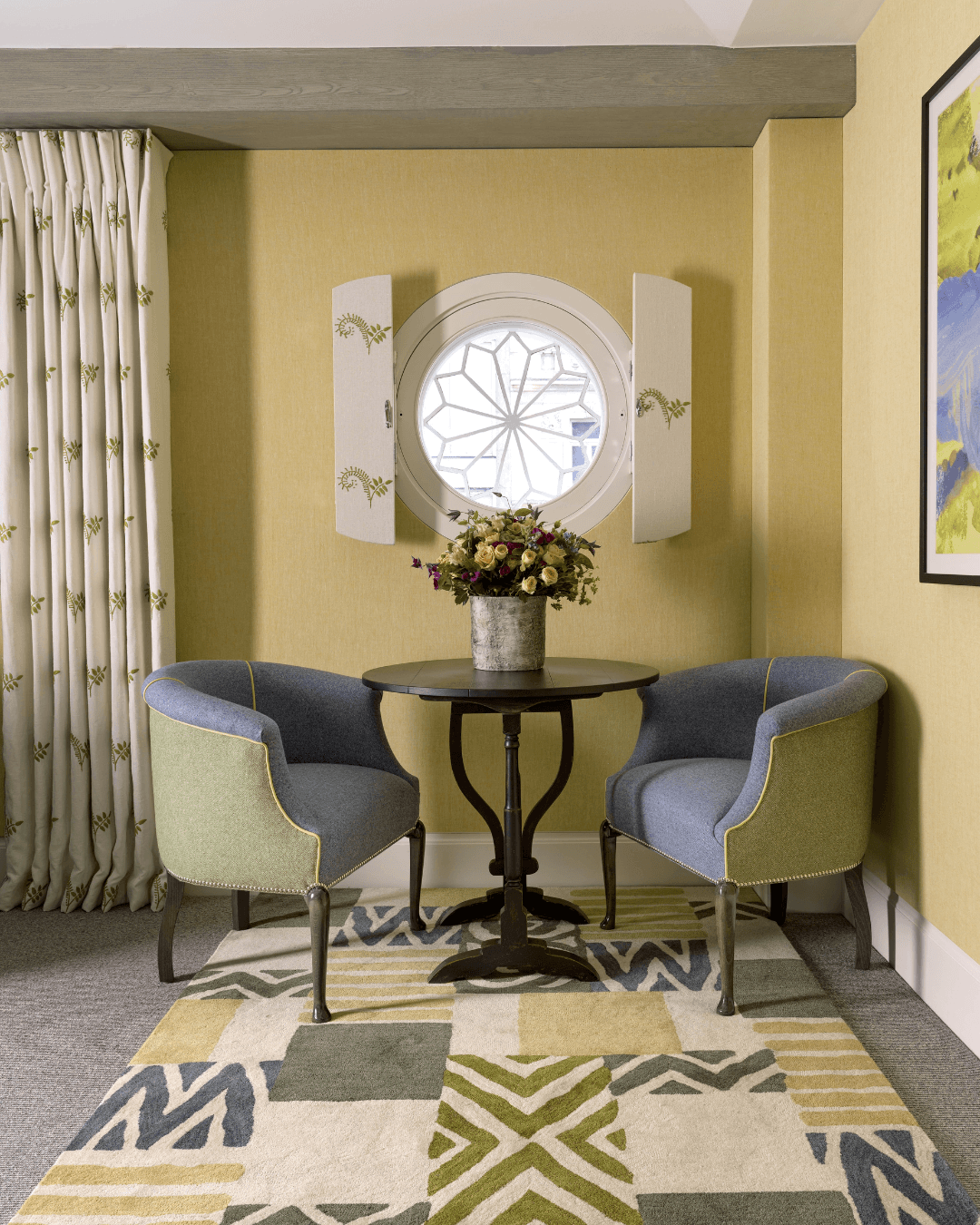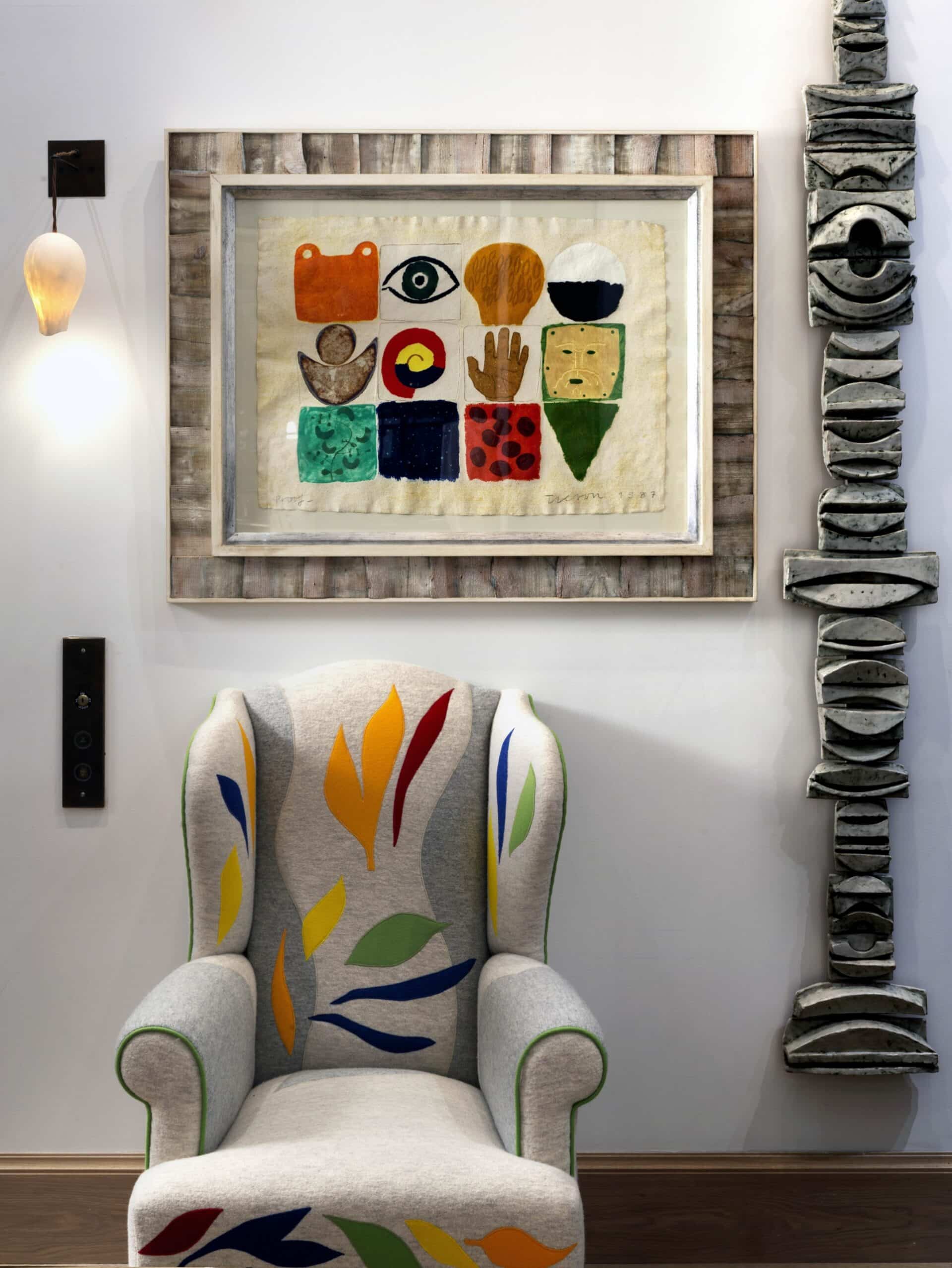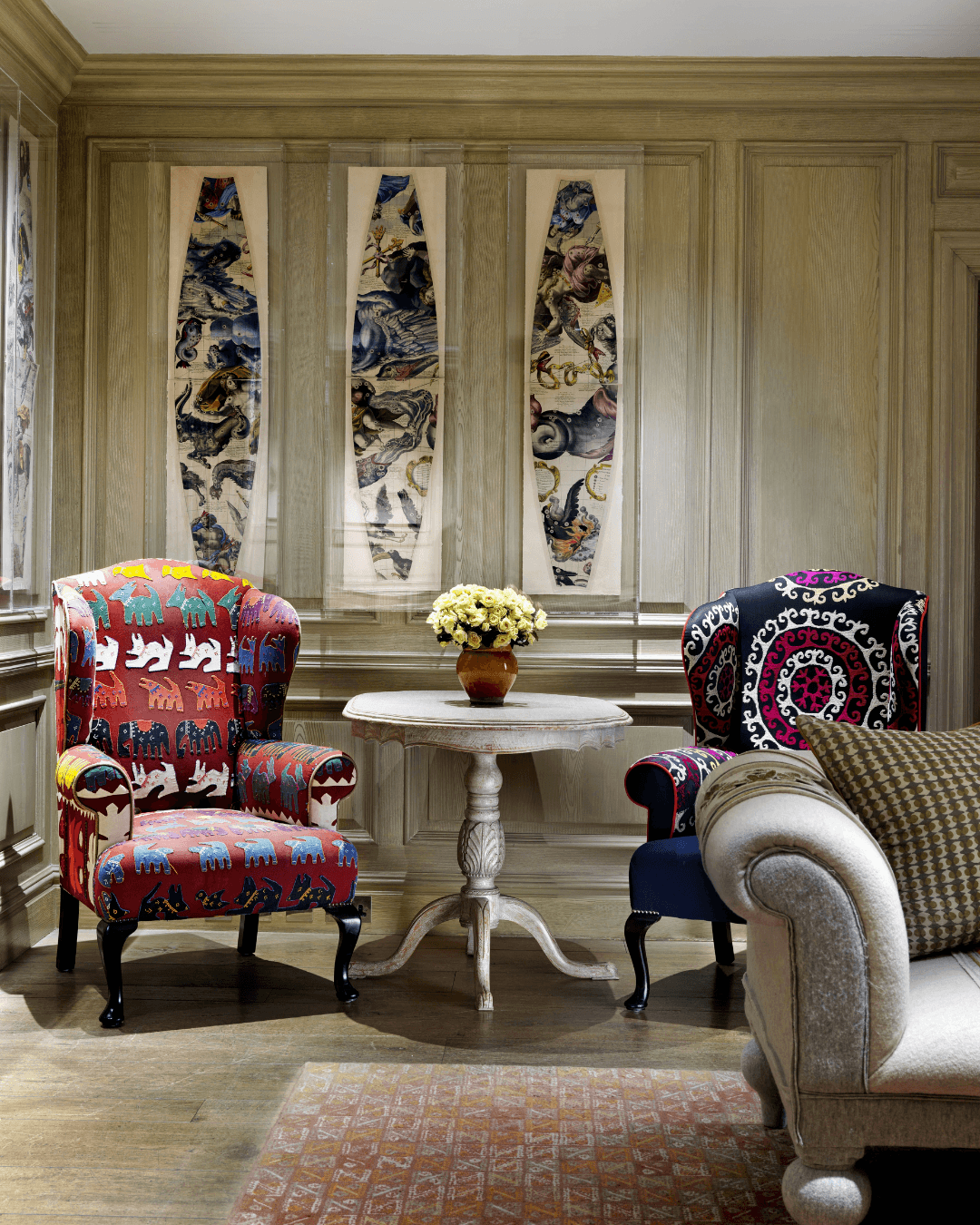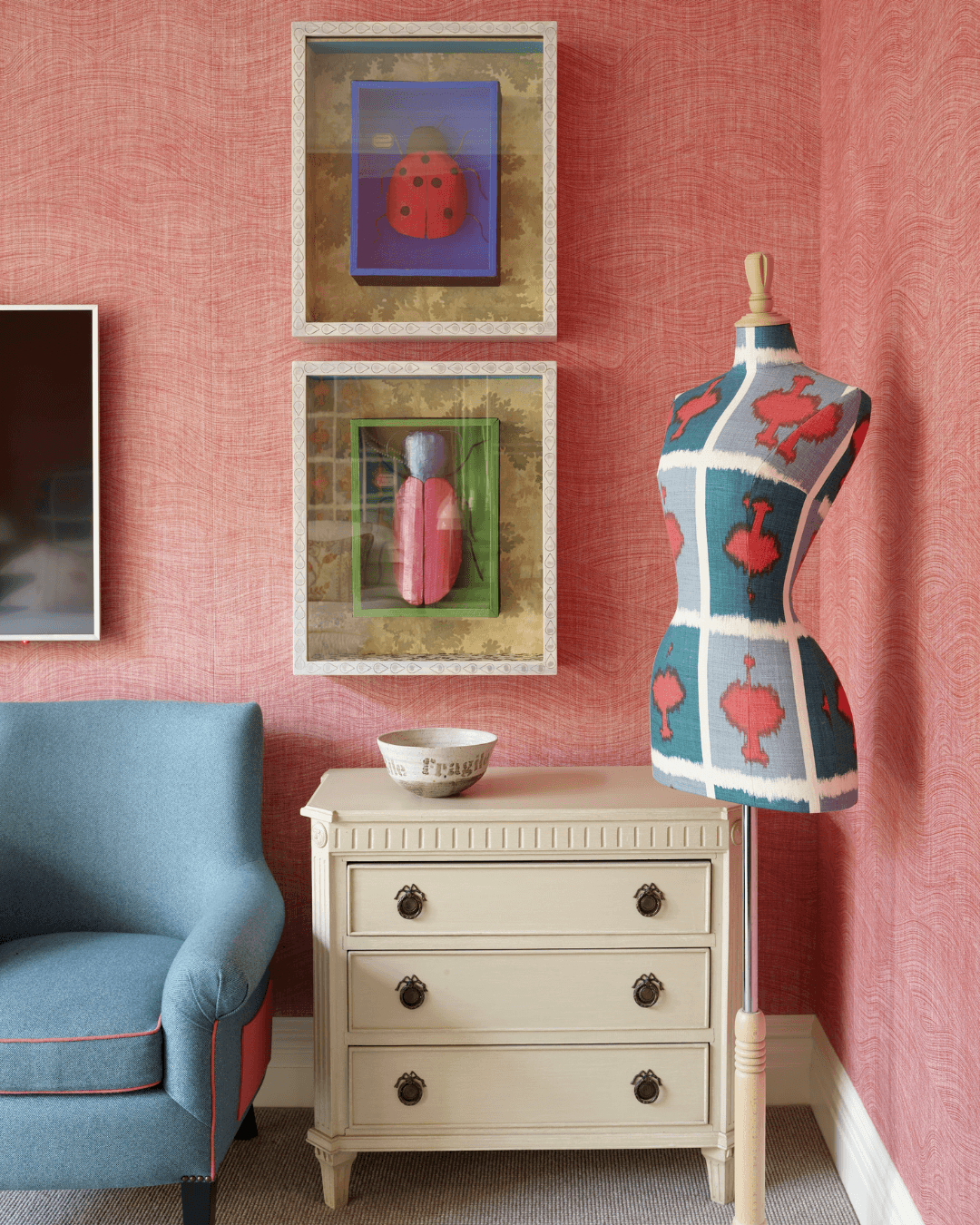Alignment is an interior design principle used to achieve a cohesive sense of balance within a space. To create an aligned scheme, it’s important to consider the relationship between all elements within a space. Understanding the fundamentals of alignment can create effortless compositions that enhance the journey of how we engage with a scheme. Join us as we share our ‘Alignment Secrets’…
First you should determine a focal point to create your central line. This can be informed by architectural elements such as windows and fireplaces. Centre alignment is the most common composition and can create a sense of stability, equilibrium and comfort. When we designed a unique workspace, Richmond Buildings, we used the windows and walls to dictate a vertical centre line. Here you’ll see how the furniture is arranged to centre on this focal point. This creates a visual dialogue which is grounding and encourages social interaction.
Using centre alignment in bathrooms is a great way to instil order. Our bathrooms are intentionally designed using centre alignment as this creates an opportunity to introduce statement pieces such as free standing bath tubs. An example of this is a bathroom in The Whitby Suite at The Whitby Hotel. Here the basins are aligned to the centre of the mirrors, whilst other facets are arranged on a central line to the basins. This creates a connection between all of the bathroom’s elements.
Edge alignment is when compositions are either to the left or right. This allows you to experiment and create playfulness by forming the unexpected. Choose a grounded item such as a furniture piece or artwork and line up from there. In our lobby at The Whitby Hotel, the edge of a Wing Chair and picture frame are both aligned to the left. A tall sculpture and light fixture surround to create a grid composition. This refines the space and the composition invites you to take a seat!
In our Library at The Soho Hotel, we have centred the artworks to two wall panels, but have positioned a side table to align to the right edge of the last artwork. This creates a dynamic composition – a great way to liven up a space. Don’t be afraid to experiment!
Alignment is all about crafting how you’d like people to engage in your spaces and we hope these principles will inspire you to line up with your interiors!
Architectural features make great centre line points. They can be used to direct spatial compositions.
If you need to create your own focal points, use furniture as a base for your compositions.


